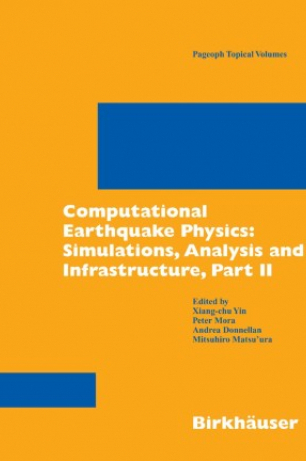
Computational Earthquake Physics, Part II
Publication year: 2007
ISBN: 978-3-7643-8131-8
Internet Resource: Please Login to download book
Exciting developments in earthquake science have benefited from new observations, improved computational technologies, and improved modeling capabilities. Designing realistic supercomputer simulation models for the complete earthquake generation process is a grand scientific challenge due to the complexity of phenomena and range of scales involved from microscopic to global. The present volume - Part II - incorporates computational environment and algorithms, data assimilation and understanding, model applications and iSERVO. Topics covered range from iSERVO and QuakeSim: implementing the international solid earth research virtual observatory by integrating computational grid and geographical information web services; LURR (Load-Unload Response Ratio) described in six papers involving this promising earthquake forecasting model; pattern informatics and phase dynamics and their applications, which was also a highlight in the Workshop; computational algorithms, including continuum damage models and visualization and analysis of geophysical datasets; evolution of mantle material; the state vector approach; and assimilation of data such as geodetic data, GPS data, and seismicity and laboratory experimental data.
Subject: Earth and Environmental Science, Earthquake Physics, Simulation, aftershock, computer simulation, dynamic rapture, earthquake, earthquake generation, earthquake prediction, microscopic simulation, model, modeling, scaling physics, seismic, wave propagation